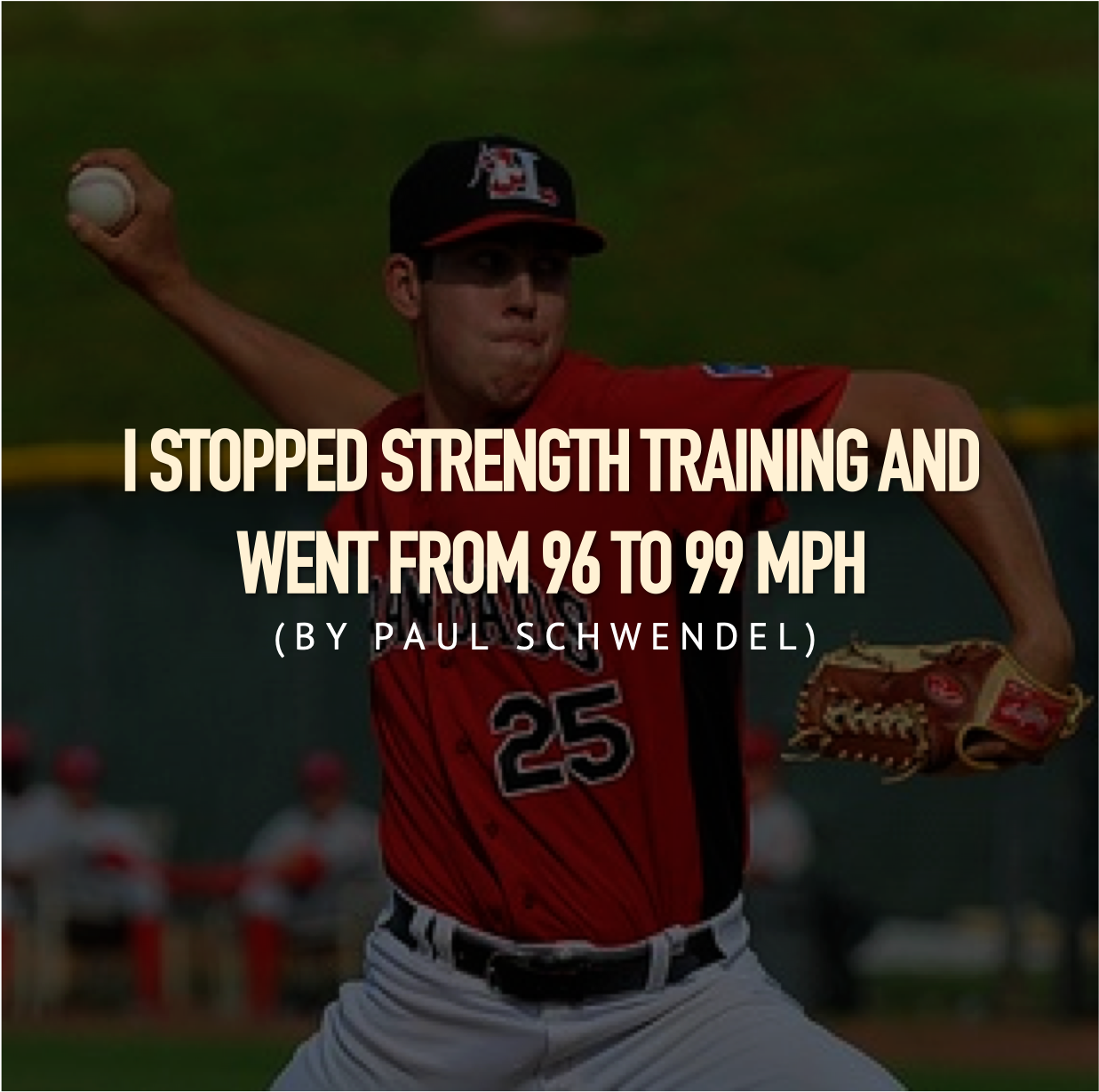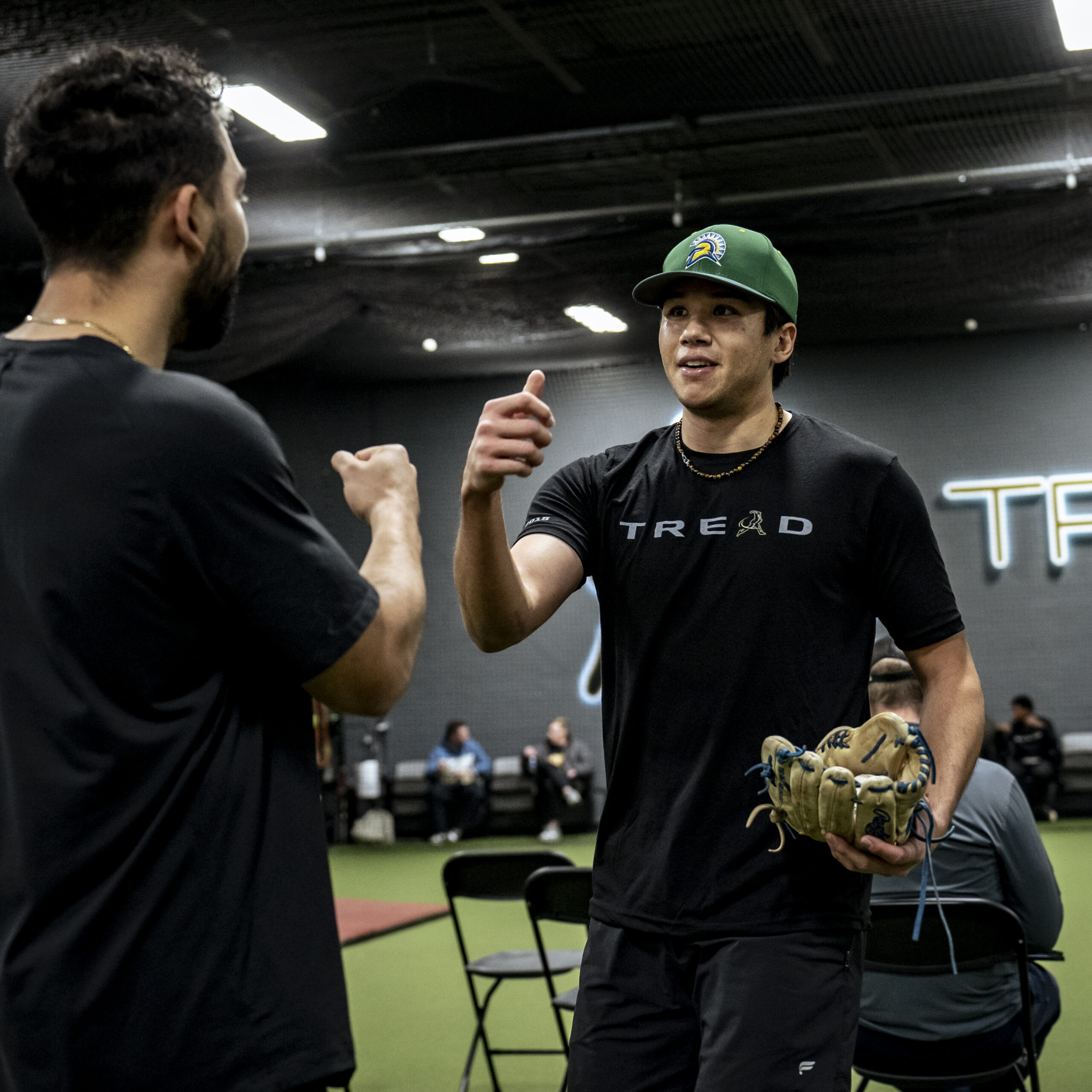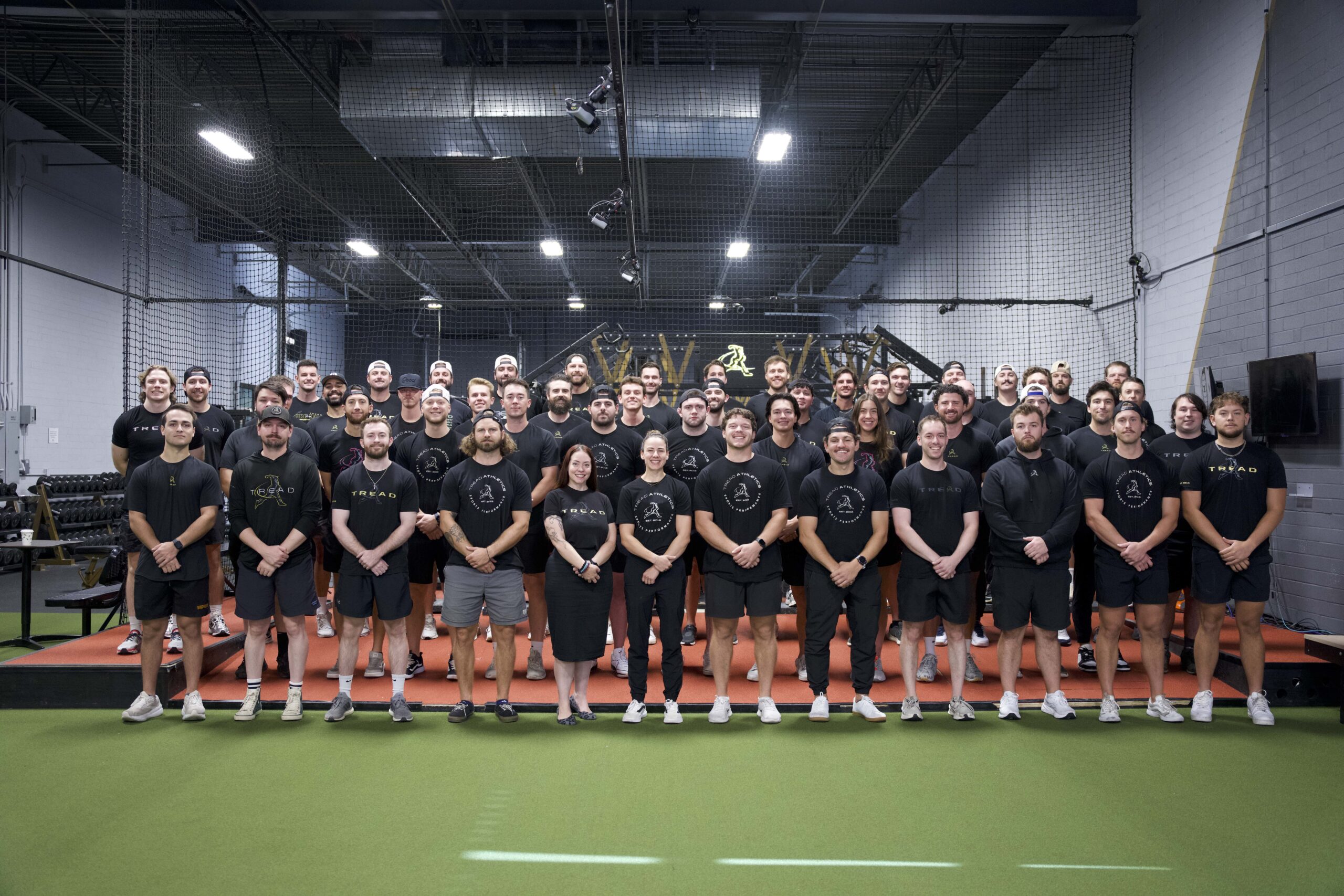By Paul Schwendel
My name is Paul Schwendel and I’m a coach at Tread.
I’m also a pro pitcher.
In this article I’m going to share my story and 2020 training strategy, where I made my way back into pro ball at 31 years old and gained nearly 4 mph to my average fastball.
If you’re a strength coach and your blood is boiling over the title – and implication that pitchers shouldn’t strength train – don’t worry. We still use heavy strength training with the majority of our athletes.
Before I share what I did and how you can potentially incorporate some of these principles into your own training, let me give you some context on my personal training journey.
From Pro Ball to Desk Jockey (and back again)
You might see the clip above and shrug me off as another genetic freak. But while I am 6’5″, I haven’t been a hard thrower my whole life.
Far from it.
I was a walk-on pitcher at D3 Emory University from 2008-2012, where I struggled for 3 years (throwing 85-87) but had a breakout year as a 5th-year senior (touching 94).
After being drafted by the Rangers in the 40th round, I spent two seasons in their system before I was released in 2014 with medial elbow pain. I was 91-94 at this point, but inconsistent with my velocity on a game to game basis.
I got a 9 to 5 desk job for the next few years while struggling with elbow pain throwing, and had all but given up on the dream of pitching professionally.
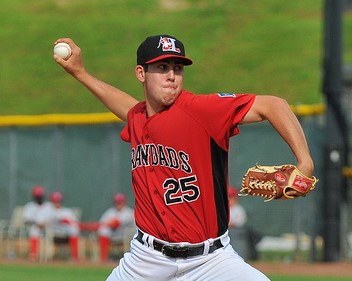
After meeting Ben Brewster and talking to him about my elbow, I had UCL repair surgery in 2018 and spent the next year and a half rehabbing, during which I started training remotely with Tread.
I touched 96 in a men’s league game in 2019 and was able to play Indy Ball this season in the American Association for the Chicago Dogs.
After experimenting with more high velocity and ballistic/plyometric training early this year, I saw a large increase in bullpen velocity (from 90-92 to 94-96 indoors) that carried over to the game, where I sat 95-97 and touched 99 this season.
Why Velocity Gains Come Relatively Easy Early in a Program
If you’re a pitcher who has been training for a couple of years or more, there’s a good chance you’ve experienced plateaus in velocity or performance spanning months or even years at times.
While velocity gains seem to come relatively easy for younger trainees, at a certain point it just isn’t possible to see 8 mph gains in velocity that coincide with 20 lb gains in muscle mass over the span of 6 months.
At a certain point, the general strength improvements caused by even the best lifting program show diminishing returns when it comes to progression in velocity on the mound.
I know, I wish throwing hard was as simple as having a 600 lb deadlift and bench pressing 350 lbs too – but unfortunately I don’t make the rules.
Let’s explore some reasons this is the case.
When we’re relatively untrained, adding muscle mass and general strength correlates well to gains in throwing velocity.
We’ve all seen the 150 lb string bean who adds 20 lbs over the summer and comes back to school throwing 5 mph harder.
Ben did a write-up on this a few years ago where one travel org Tread trained saw an average gain of 6.7 miles-per-hour in a 3 month training period.
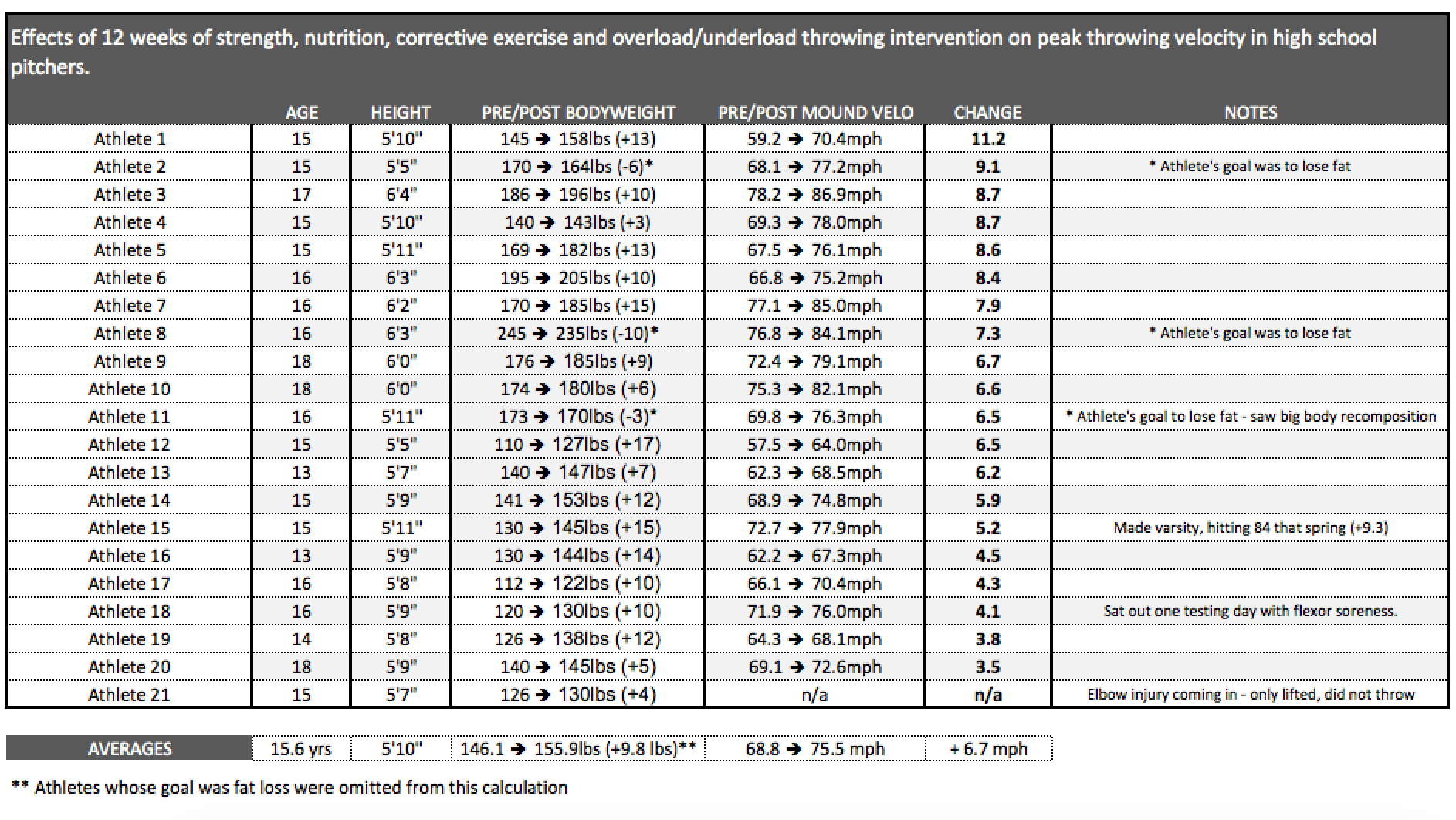
The reason this is possible is that general strength improvements tend to have a positive impact on our ability to produce force at any velocity. So when Johnny is a sophomore in high school, and his bench press 1RM goes from 130 lbs to 200 lbs, there’s a very good chance that he will see a large increase in throwing velocity.
The reasons for this are numerous (better activation of prime movers, gains in tendon stiffness, improved lateral force transmission) but beyond the scope of this post.
Absolute Strength and The Point of Diminishing Returns
However, at a certain point, gains in maximum or absolute strength (i.e. training that increases your one-rep max) provide diminishing returns to increasing power output.
You may also hear this referred to as high-velocity strength, strength-speed, speed-strength, explosive strength or special-strength.
While there are subtle distinctions between some of this terminology, what ultimately matters as a pitcher is your ability to apply force quickly, and absolute strength training does a good job at improving this ability to a point.
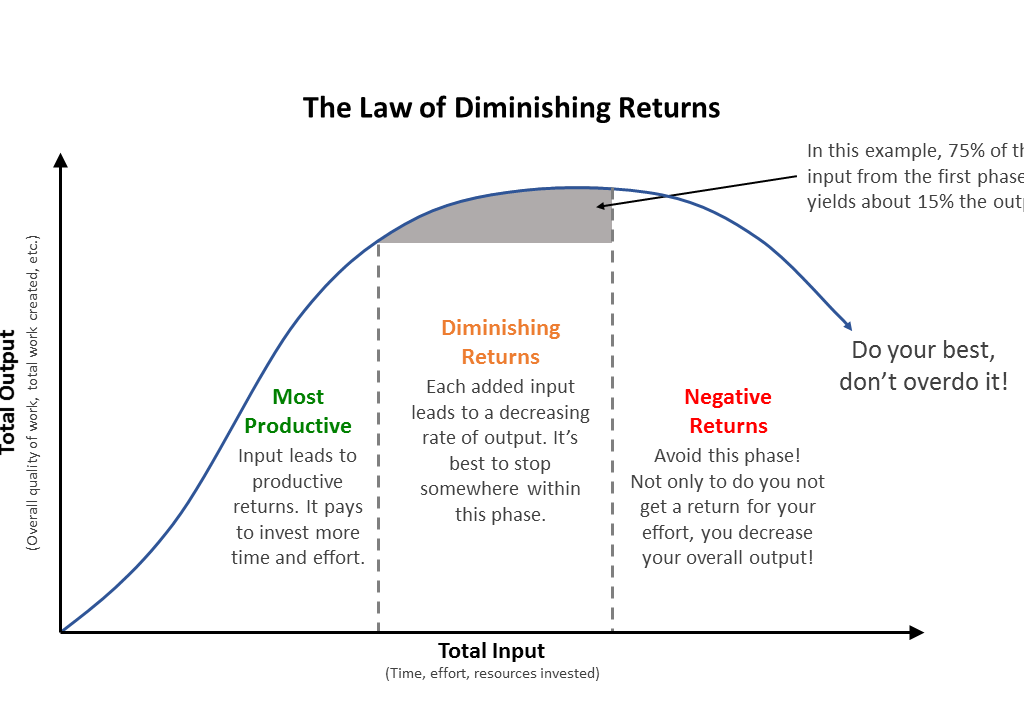
This is why you don’t see strongmen or powerlifters who can deadlift 800+ lbs competing on the baseball field. There’s a point where athletes are strong enough (at least in the context of lifting a barbell), and going from 400 to 500 lbs on a squat may not be worth the training economy it will take to get there.
What I mean by training economy is the idea that you have a limited (finite) amount of capacity to train and recover each day, week and month. You can only recover from so much, and you only have so much time and energy to devote to training, so you want to be reasonably sure that improved performance actually awaits you on the other side.
At Tread, what we’ve seen both in Our Team‘s hundreds of years of combined playing and coaching experience as well as over the 1,000+ athletes we’ve individually worked with (in addition to many more through team consulting) is that there is such a thing as strong enough.
We call this MLB Strong.
Once you’re as strong as an above-average MLB player, the training focus should shift away from absolute strength (producing maximum force) to power and speed (producing that force as quickly as possible).
We’ll discuss what we feel these exact metrics are in a different post, but feel free to download our Metric Analysis Tool and plug in your own numbers if you’re curious.
Chasing Adaptations Specific to High Velocity Movement
Once a level of general strength is reached, the adaptations with the most bang for their buck are those that are specific to high-velocity force production.
This is where attributes like muscle fiber contractile velocity, early phase force production, decreased antagonist muscle activation, and retention of type IIX muscle fibers (super-fast muscle fibers that are proportionally decreased by resistance training) come into play.
All of these attributes are highly specific to the velocity at which a movement is performed, and some, like type IIX muscle fiber retention and antagonist activation, can even be negatively influenced greatly by heavy weight training, especially in high volumes.
The realization that slow-speed strength training blocks may actually be doing more harm than good for certain athletes was one my biggest takeaways from studying the science of training transfer and the work of coaches like Cal Dietz (author of Triphasic Training) and Chris Beardsley.

In practice, for most throwers this means that going from 80 to 85 mph is likely much different than going from 90 to 95 mph.
While a young trainee might see a 5-10 mph increase in velocity simply by increasing his/her squat or bench press and/or adding 20 lbs of muscle mass, an athlete who has a relatively developed strength base is very unlikely to see those same gains from similar training.
The training approach must evolve as the athlete advances closer to his genetic ceiling.
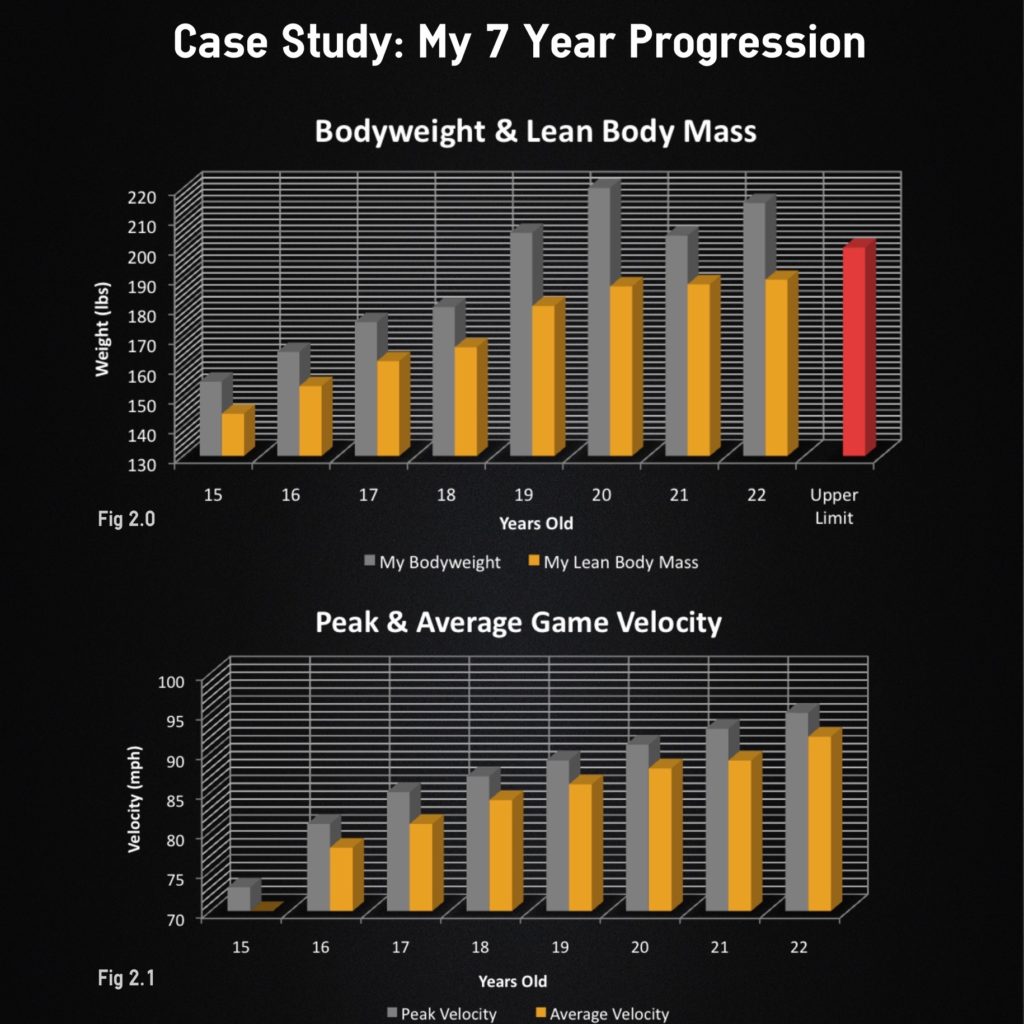
Am I a Candidate for High-Velocity Training Techniques?
So how do you decide when to train for what?
While any throwing athlete would benefit from more high-velocity strength, those who have a force-velocity curve geared more towards the force end of the spectrum will likely benefit the most from high velocity training methods.
At Tread we classify springy, force-deficient athletes as “Kangaroos” in need of increased maximum strength while we classify the slower-twitch, reactive-deficient athletes (like I was) as “Gorillas” who are in need of fast-twitch power training.
That is to say – athletes should focus on what they suck at relative to everything else. Which for me, was everything at the bottom right of the force-velocity curve below.
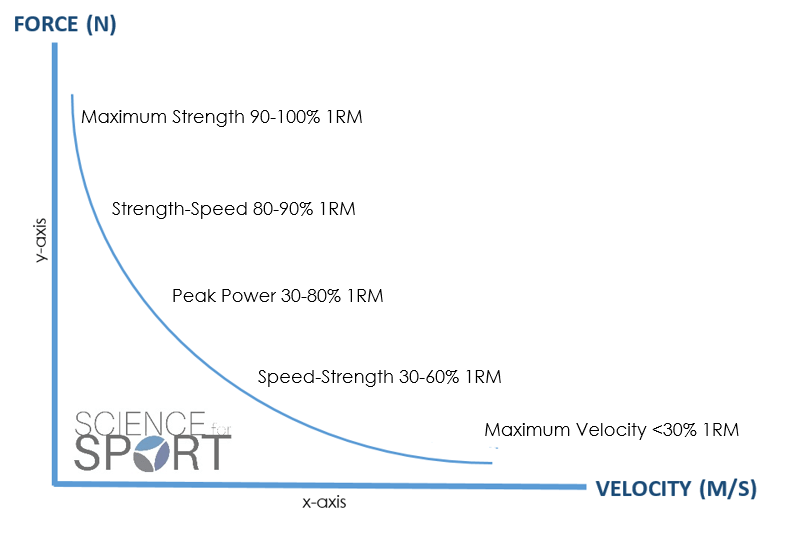
While not an exact science, a simple comparison of a vertical jump (also called a counter-movement jump), a squat jump (also called a paused or static jump) and a step-into jump (also called a reactive jump) will give us clues as to how that athlete produces force and where they stand on the force-velocity curve.
- A pause jump utilizes primarily active muscular effort to produce force because the pause eliminates the stored elastic energy in the tendons.
- A reactive jump utilizes primarily stored elastic energy as the quad, hamstring and achilles tendons quickly stretch and rebound the athlete off the ground.
- A vertical jump relies on a combination of both strategies.
How these three jump metrics relate to each other gives us clues as coaches as to how an athlete produces force (at least in the context of a jumping pattern).
We collect this information during the assessment process for our online coaching athletes.
Here’s a look at a “reactive-deficient” athlete:
He can Pause-Jump the same height as his Countermovement Jump (28 inches), and he only jumps one inch higher on a step-into Reactive Jump (29 inches).
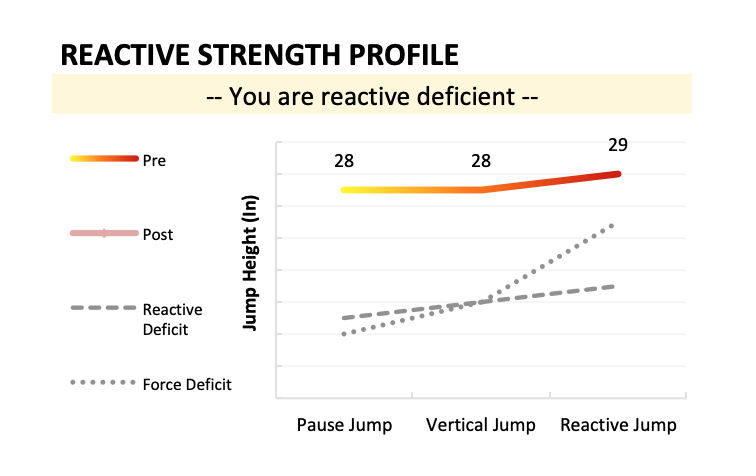
In the context of the Kangaroo-Gorilla classification system, this athlete would be classified as a Reactive-Deficient “Gorilla.”
Athletes who don’t see an increase in jump height by utilizing a countermovement are generally better at producing force at low velocities as they make poor use of the elastic properties of their muscles, tendons and fascia.
These athletes, like myself, stand to benefit the most from the adaptations caused by a high-velocity strength training program.
You can read more about the specific adaptations caused by ballistic and explosive movements here. I’d highly recommend following Chris Beardsley’s work on twitter at @SandCResarch and on Instagram as well. He posts the latest research on high-velocity strength development via concise infographics that I’ve found extremely helpful in my own training and research.
Implementing High-Velocity Training Principles
After mixing up my training, I pretty quickly saw a dramatic improvement in my ability to produce force at high velocities that was evident in my bullpen sessions (which went from 90-92 to 94-96 mph).
My relatively advanced training age (I’d been training in the weight room in some capacity for 12 years at this point) meant that I had a very good base of strength that allowed me to take advantage of this training methodology quickly.
A couple of ways that I’ve implemented this concept into my own training are by including ballistic pushups (thinking “get off the ground”) to train my pec to fire reflexively and adding max intent medball throw variations while tracking with a radar gun.
Here’s a sample superset from an athlete’s program along with a few videos of what this types of training entails. We like to work up and down the force-velocity continuum by including contrasts sets, complex sets and french contrast sets. More on those in another post.
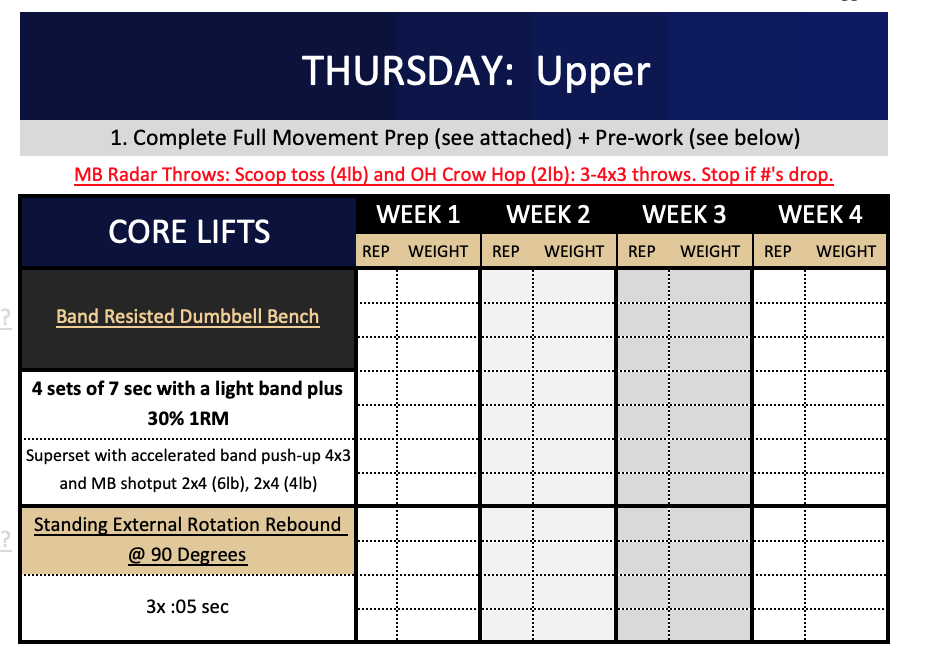
These concepts can be applied to every movement in the weight room (squats, rows, pull-ups, cuff work, push-ups, etc).
Improved Scap Loading – A Possible Link to High-Velocity Training?
Take a look at my before and after mechanics (below).
Specifically, I want you to look at the position at maximum scap retraction. Yes, I know the video on the left is a bullpen and the angles are slightly different, but what you’ll see is a noteworthy difference in posture and scap retraction.

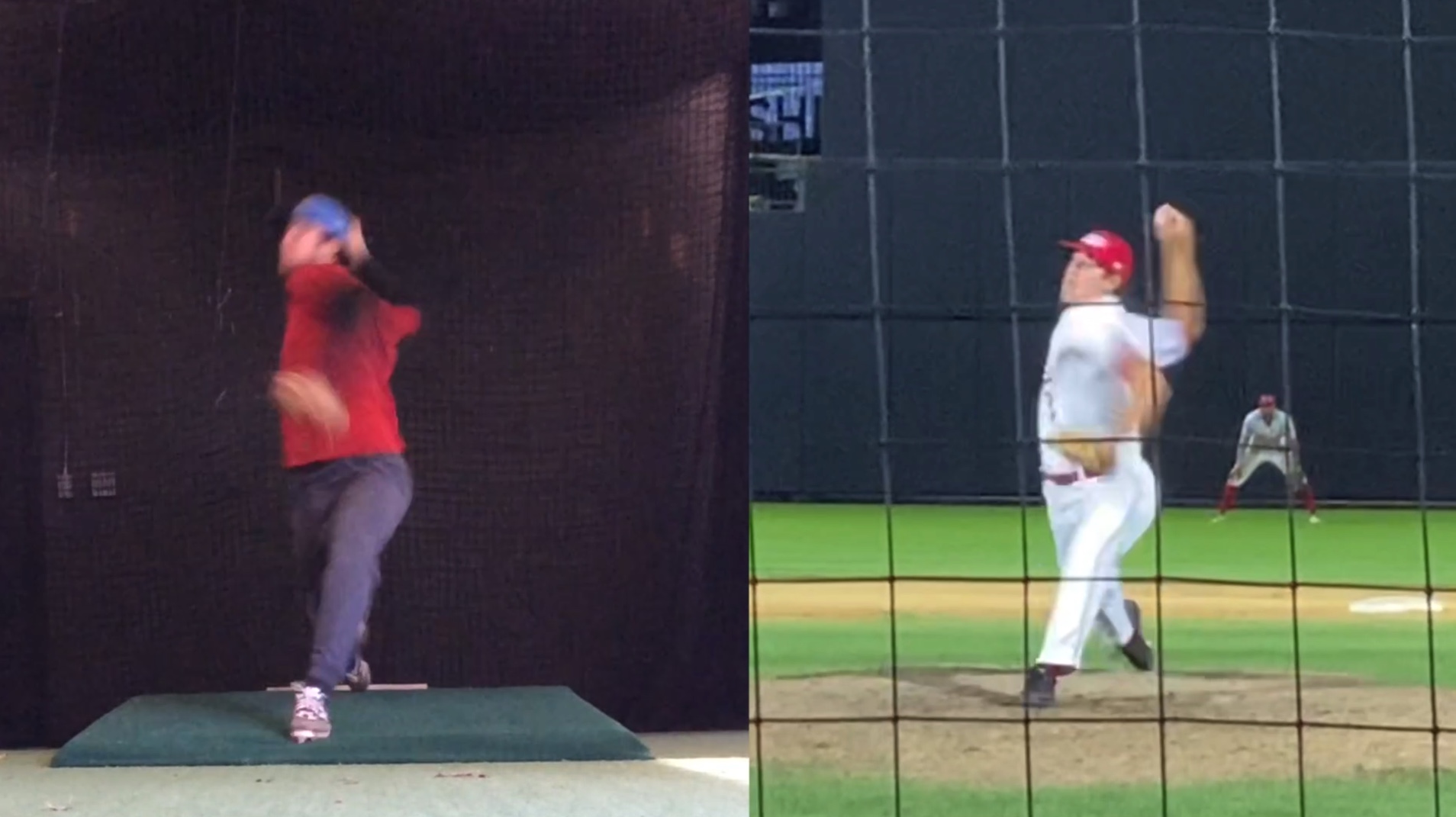
It’s possible this has nothing to do with the high-velocity training, but there is an explanation for how it might.
Plyometric training has been shown to aid in antagonistic relaxation – or the ability to turn off opposing muscle groups during high velocity movements.
It’s possible that my enhanced ability to relax (specifically my pec and anterior shoulder during the arm swing) aided in my ability to avoid muscling up and reach full retraction.
At Tread, we’re careful about making claims about weight-room training directly impacting pitching mechanics because that’s a slippery slope, but this is a plausible case that we will be examining further.
Wrapping it Up
If there’s one thing I would say to young athletes, or a young Paul, it’s this; strength is important, but how we define strength matters. Are you getting stronger in the context of your sport? Or are you chasing weight room numbers with diminishing returns?
Paul is currently training full-time and is a Tread coach for a number of our athletes including several MLB pitchers. He’s working towards signing with an affiliated team in 2021 and continuing his push towards pitching at the highest level. You can follow Paul and his journey on twitter.

